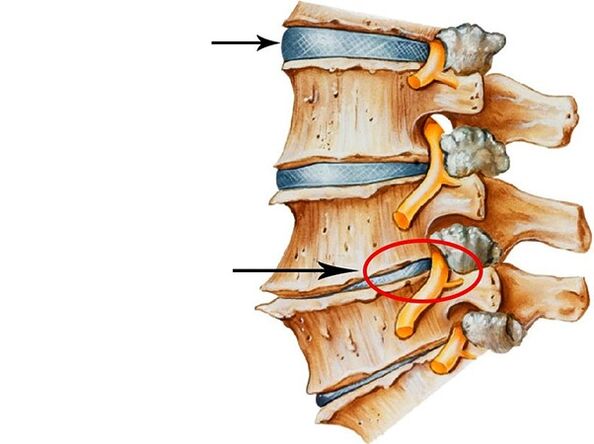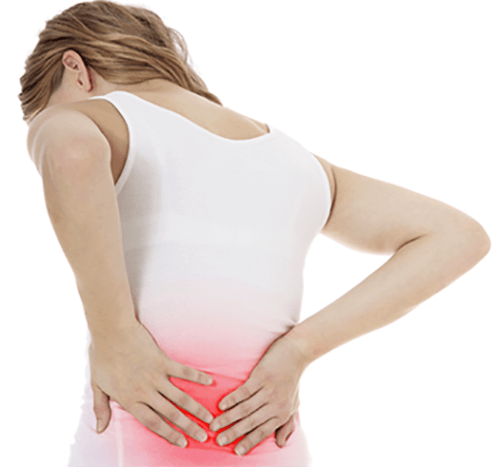Osteochondrosis is one of the most common spinal pathologies.In this disease, spinal cartilage tissue and intervertebral discs are affected.Most often, osteochondrosis affects the lumbar area, because on top of the maximum load when walking, sitting, running, and other activities.
If treatment does not begin in time, then this disease can cause radiculitis, intervertebral hernia, lumbago, ishias, defects.
Development stage
This disease is usually divided into several stages:
- The first stage- There is a small change in the intervertebral disc, the spinal column does not change shape, a person feels a little pain in the lower back.
- Stage 2- Pain in the affected area becomes stronger, violations of intervertebral discs become more visible.
- Stage 3- There is an intervertebral hernia, the spinal column is deformed.Patients feel severe pain in the affected area.
- 4th stage- Being difficult for someone to walk and do any movements.Pain occurs with a little movement.At this stage, the last, the patient is given a disability, as a rule.

Reason
Most often, people whose professions or types of activities are associated with physical activity and large burdens in the Lumbar department: builders, driving, utility workers, and athletes experience osteochondrosis.Also, pathology can occur to teachers, cashiers, office workers, because they spend most of time in a sitting position.
There are many factors that influence the occurrence of osteochondrosis:
- Lack of physical activity, performing a permanent lifestyle.
- Strong burden in the lumbar area.
- Joint disease and spine.
- Lumbar spinal cord injury.
- Flat leg or club club.
- Obesity.
- Poster disorders, stoop.
- Scoliosis or kyphosis.
- Long -term hypothermia.
- Changes related to age in the spine.
- Genetic tendency.
- Some internal diseases of the cardiovascular system, nerves, endocrine.
- Inappropriate nutrition.
Symptom
The main signs of the lower back osteochondrosis are:
- Strong pain in the lower back, sometimes giving up on the feet and intensifying when doing any movements, sneezing, coughing, etc.
- Constant back muscle tension.
- The inability to straighten the back after a long stay in the same position.
- Unpleasant sensation when tilting or back extension.
- Lights on the lower back.
- Loss of sensitivity in the buttocks, hips.
- Goosebumps, tingling sensations in the feet.
- Numb legs and feet.
- Constant leg crime and cold feelings in the feet.
- Varicose veins.
- Potential violations in men.
- Irregular menstruation in women.

The main symptom of pathology is pain, when the appearance you need to immediately consult a doctor.
Diagnostic
The diagnosis of osteochondrosis begins with a comprehensive examination of the patient and collection of history - the doctor asks the patient about cases of osteochondrosis in the genus, chronic diseases, lifestyle, type of activity, joint and spine disease.
Furthermore, specialists prescribe the instrumental diagnostic method, including:
- X -Ray from the lumbar area- Allows you to detect the presence of pathology and vertebral damage.
- Computed Tomography (CT)- A more accurate research method that allows you to determine damage to the intervertebral discs, the level of change, the level of spinal deformation.
- MRI-Allows you to study intervertebral discs thoroughly, provide information about small disorders in the spine, used in difficult cases or if the examination image uses CT or X -Ry examination is unclear.
- Myelography- Types of diagnosis in which contrast agents are used to detect intervertebral hernias.
Based on data, specialists determine the pathological level and determine the necessary care.
Treatment
Osteochondrosis treatment is carried out comprehensively.The drugs and procedures needed are only prescribed by the doctor, individually.
First, patients are prescribed a number of drugs based on NSAIDs -Anti -inflammatory non -steroidal drugs that can relieve inflammation and relieve pain in the affected area.Chubontrotector is also prescribed - drugs that stop the process of destruction of cartilage and feed cartilage tissue.Vitamins that improve the condition of all organisms are prescribed as additional drugs.
For many spinal diseases, including osteochondrosis, physiotherapy is prescribed.The procedure can increase blood circulation in lesions, eliminate tension from muscles, relieve pain and inflammation.With osteochondrosis, electrophoresis, acupuncture, magnetic therapy and other procedures are prescribed.
Patients are also prescribed massage, mud immersion or hydrotherapy which is possible to eliminate tension and muscle fatigue, relax, and increase blood flow.Muddy Mud Baths can eliminate the inflammatory process.
In the first stage of this disease, exercise therapy is prescribed - color exercise, whose performance helps restore the mobility of the spine, to strengthen the back muscles.At 3 and 4 stages of osteochondrosis, this type of treatment is not used.
Diet is very important in the treatment of diseases - need to be included in a diet product rich in minerals - fruits, vegetables, porridge.Be sure to eat low -fat meat, because it is rich in protein - it will be very useful for eating chicken or turkey.This will be useful for using fermented milk products.It is recommended to reduce the amount of fatty dishes, sharp, smoke, fried.It is important to observe drinking mode - Make sure to drink at least 1 liter of clean water per day.
With osteochondrosis lumbar area, treatment in the sanatorium will be useful, where experts during the whole period of patients in the complex will treat disease, and patients continue under the supervision of a doctor.
If the conservative treatment method does not help, the surgical treatment method is used.During the operation, the affected wheel or cartilage was replaced by the implant.And if there is an intervertebral hernia, then it is deleted.
Prevention
- Limit the load on the lower back.
- Playing sports, do morning training.
- Eat properly.
- Try to prevent lumbar spinal injury.
- Avoid lower back hypothermia.
- With a long chair, change the position of the body more often, regularly wake up and do a simple exercise for warm -up or just walk.
- Keep the right posture, don't bow.
- In the case of clubs or flat legs, wear special orthopedic sol which reduces the burden on the spine.



















































